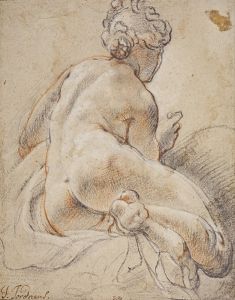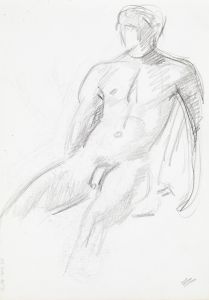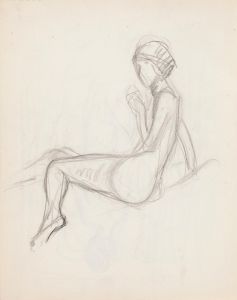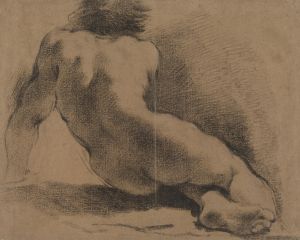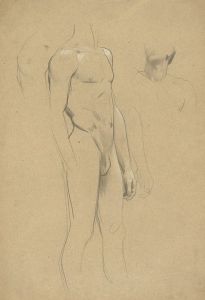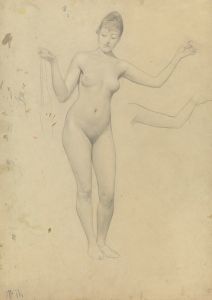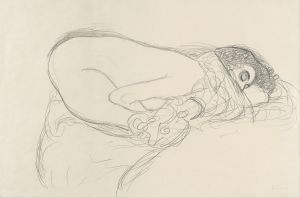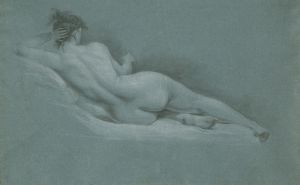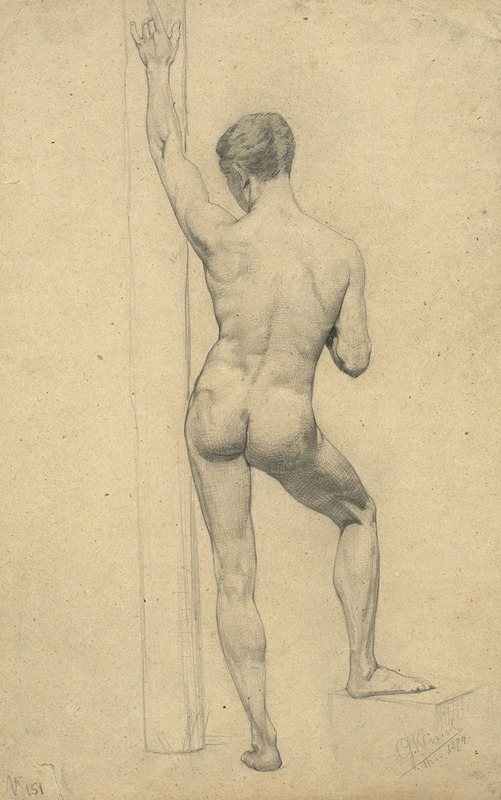
Männlicher Akademieakt, Rückenansicht
A hand-painted replica of Gustav Klimt’s masterpiece Männlicher Akademieakt, Rückenansicht, meticulously crafted by professional artists to capture the true essence of the original. Each piece is created with museum-quality canvas and rare mineral pigments, carefully painted by experienced artists with delicate brushstrokes and rich, layered colors to perfectly recreate the texture of the original artwork. Unlike machine-printed reproductions, this hand-painted version brings the painting to life, infused with the artist’s emotions and skill in every stroke. Whether for personal collection or home decoration, it instantly elevates the artistic atmosphere of any space.
Gustav Klimt, an Austrian symbolist painter, is widely recognized for his distinctive style and contributions to the Vienna Secession movement. Among his extensive body of work, "Männlicher Akademieakt, Rückenansicht" (Male Academy Nude, Back View) is a lesser-known piece that reflects his early academic training and mastery of the human form.
This drawing, created during Klimt's formative years, showcases a male nude figure seen from the back. It is executed with precision and attention to anatomical detail, characteristic of the rigorous academic training Klimt received at the Vienna School of Arts and Crafts (Kunstgewerbeschule). The work is a study of the male body, focusing on musculature and posture, and demonstrates Klimt's technical skill in rendering the human figure. Such studies were a standard part of academic art education in the 19th century, intended to develop an artist's understanding of anatomy and proportion.
"Männlicher Akademieakt, Rückenansicht" is part of Klimt's early oeuvre, predating his more famous symbolist works such as "The Kiss" and "Portrait of Adele Bloch-Bauer I." During this period, Klimt primarily worked on commissions for public and private clients, often collaborating with his brother Ernst Klimt and fellow artist Franz Matsch. Together, they formed the Künstler-Compagnie (Artists' Company), producing decorative works for theaters, museums, and other institutions.
While Klimt's later works are celebrated for their ornate patterns, gold leaf, and exploration of themes like love, death, and the female form, his academic studies, including this male nude, provide insight into his artistic foundation. These early pieces highlight his ability to observe and depict the human body with accuracy and sensitivity, skills that would underpin his later, more experimental creations.
The exact date of "Männlicher Akademieakt, Rückenansicht" is not documented, but it is generally attributed to Klimt's academic period in the late 19th century. The drawing is part of a collection of studies that illustrate his development as an artist and his transition from traditional academic art to the innovative and highly personal style for which he is renowned.
As with many of Klimt's works, this piece is valued not only for its artistic merit but also for its role in understanding the evolution of his career. It serves as a testament to his technical expertise and the disciplined training that laid the groundwork for his later achievements.





